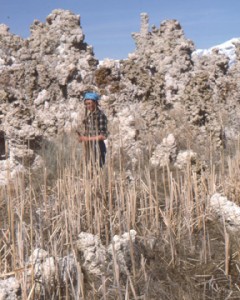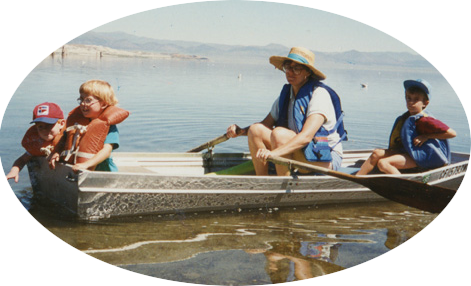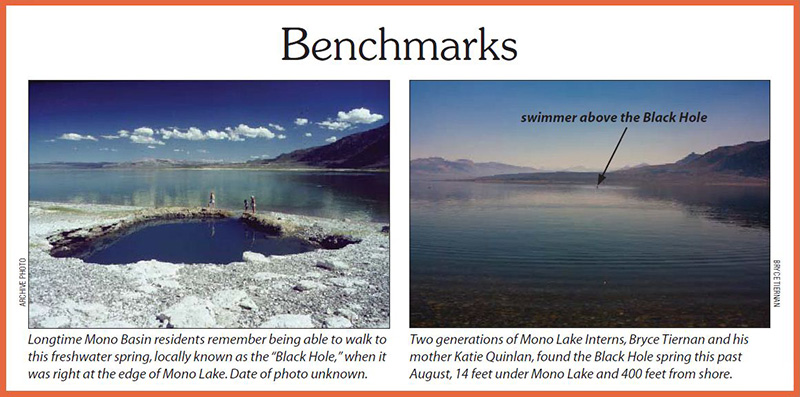
Editor’s note: In the summer of 2013 the Committee had the first second-generation intern on staff. We asked Katie Quinlan to reflect on this full-circle connection with her son Bryce Tiernan.

The summer of 1982 was my first summer as an intern in the Mono Basin. My memories of that summer are dotted with landmarks—Rush Creek was once again flowing into Mono Lake and the public trust doctrine was working its way through the courts.
The next summer I was hired as the first intern coordinator. One of my duties was to teach the interns how to do a South Tufa tour and then evaluate how they were doing. I was supposed to evaluate Emily Stuart, which was a little absurd because Emily and I had been interns together the year before and she was a theater major, so her tours were better than mine.
On the day I was to evaluate her tour she made me promise to stand in the back and be quiet. Things were going along just fine, but then I spotted a bird out on a tufa tower that I didn’t recognize. Emily was better at identifying birds than I was, so I interrupted her tour. She looked daggers at me, but when she looked through her binoculars her expression changed to a look of wonderment … it was an Osprey! We hadn’t seen an Osprey at the lake before, after all they are fishing raptors and everyone knows there are no fish in Mono Lake. This was one of the first sightings of Osprey at the lake.
Fast-forward to the summer of 2013 when my 22-year-old son, Bryce, was a Mono Lake Intern. As a family we have enjoyed the privileges that come with having an intern in the family. We used the Committee’s canoe and Bryce took my husband, Tim, and me out on a beautiful, glassy day. We were paddling among tufa I used to walk around. We spotted an Osprey sitting on a nest … and then another … and another. In all we saw five nests and 12 Osprey. What an amazing difference from 30 years ago when we got excited to see just one.
My favorite day of last summer, however, was the day Bryce and I went out to the north shore to find “The Black Hole” (see Fall 2013 Mono Lake Newsletter).
In the 1980s this was a large spring right at the shoreline of the lake. I unfortunately had not seen it back then. We knew it would be in the lake now, but we weren’t sure how far out it would be. I expected the lake to be clearer than it was—there was about six feet of visibility and then the algae was too thick to see much below that. Our plan became to swim around and see if we could feel the spring. Descriptions from the past were that it was a very cold spring. For an hour and a half we swam back and forth hoping to pass over it.
There are a lot of birds on the north shore, and at first when you get in the water the birds swim away, but after you are floating around for a while they realize you are not a threat and they come back. You become immersed in the world at their level, with gulls calling back and forth and flocks of avocets zipping by just above the water’s surface.
As the afternoon moved on, the lake got calmer. Bryce, using an old photo, lined up landmarks and noticed a large area where the surface was disturbed. We swam out there and sure enough it was a large, very cold, spring. I had brought a cam line (a metal wire on a reel with one-foot intervals marked on it) with me. I dragged it along the bottom of the lake and when it got to the edge of the spring it started reeling off like crazy. The final measurement was 14 feet deep at the edge of the spring and 57 feet deep in the center of the spring. Then we measured how far from shore the spring was—400 feet!
The thought that the shoreline has moved 400 feet on the north shore since the 1980s made me realize that what I remember and the landmarks I look for from my intern years have drastically changed—I would say for the better.
This post was also published as an article in the Winter & Spring 2014 Mono Lake Newsletter.


